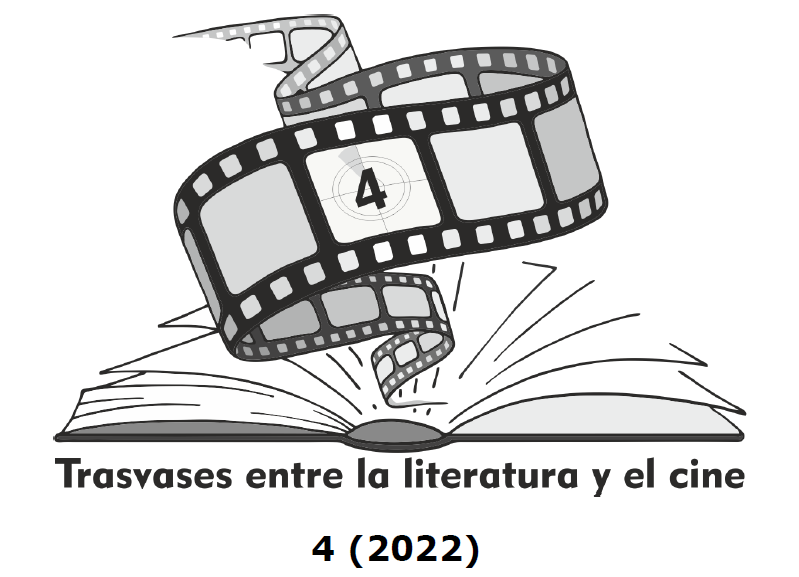From the Paris Uprising to the Samurai Rebellion: The Cultural Transformation of Les Misérables in Japanese Silent Cinema
DOI:
https://doi.org/10.24310/Trasvasestlc.vi4.14682Keywords:
intertextuality, cross-cultural adaptation, Victor Hugo, French literature, Japanese cinemaAbstract
From the beginning of the Meiji era (1868-1912), Victor Hugo's novel Les Misérables had a great influence on Japanese literature, cinema, and politics. After the publication of the first translation in Japanese, the story became so popular that film studios produced four silent adaptations of the novel between 1910 and 1931. This study analyzes these cross-cultural adaptations, examines the cultural transformation of narrative elements, and describes how the commercial or aesthetic interests of the industry, as well as the ideological and social changes experienced by the country during those two decades, determined the interpretation and adaptation of the novel.
Downloads
Metrics
Publication Facts
Reviewer profiles N/A
Author statements
Indexed in
-
—
- Academic society
- N/A
- Publisher
- Universidad de Málaga
References
ANDERSON, Joseph (1992), «Spoken Silent in the Japanese Cinema; or, Talking to Pictures: Essaying the Katsuben, Contextualizing the Texts», en A. Nolletti y D. Desser (eds.), Reframing Japanese Cinema: Authorship, Genre, History, Bloomington, Indiana University Press, págs. 259-310.
ANÓNIMO (1923), «Aa muj?», Kinema Junp?, 134, pág. 5.
ANÓNIMO (1929), «Aa muj? zenpen to Kohen», Kinema Junp?, 1929, pág. 72.
ARAGAY, Mireia (2005), «Reflection to Reaction: Adaptation Studies Then and Now», en M. Aragay (ed.), Books in Motion: Adaptation, Intertextuality, Authorship, Amsterdam-New York, Rodopi, págs. 12-34.
BERNARDI, Joanne (2001), Writing the Light: The Silent Scenario and the Japanese Pure Film Movement, Detroit, Wayne State University.
DYM, Jeffrey (2000), «Benshi and the Introduction of Motion Picture to Japan», Monumenta Nipponica, 55/ 4, págs. 509-536.
FUJIKI, Hideaki (2013), Making Personas: Transnational Film Stardom in Modern Japan, Cambridge, Harvard University Asia Center, Harvard University Press.
GERAGHTY, Christine (2008), Now A Major Motion Picture: Film Adaptations of Literature and Drama, Lanham, Rowman and Littlefield.
GEROW, Aaron (2012), «The Sword and The Screen: The Japanese Period Film 1915-1960» Film Series Commentaries, 1. [ En línea: http://elischolar.library.yale.edu/ceas_film_series/1. Fecha de consulta: 15/09/2021]
HUGO, Victor (2015), Los miserables, Madrid, Alianza editorial.
HUTCHEON, Linda (2006), A Theory of Adaptation, London- New York, Routledge.
JACOBY, Alexander, A Critical Handbook of Japanese Film Directors: From the Silent Era to the Present Day, Berkeley, Stone Bridge Presss.
JANEIRA, Armando M. (2016), Japanese and Western Literature. A Comparative Study, Tokyo, Tuttle Publishing.
KEENE, Donald (1984), Dawn to the West: Japanese Literature of the Modern Era: Fiction, New York, Henry Holt.
KOMATSU, Hiroshi (1996), «The Classical Cinema in Japan», en G. Nowell-Smith (Ed.), The Oxford History of World Cinema, Oxford, Oxford University Press, págs. 413-422.
MCDONALD, Keiko (2000), From Book to Screen, Arkmon, M.E. Sharpe.
PINAR, Alex (2020), «Àngel Guimerà en el cine japonés: intertextualidad intercultural en la adaptación de Kenji Mizoguchi del drama Terra Baixa», Trasvases entre la literatura y el cine, 2, págs. 241-252.
SCHOBER, Regina (2013), «Adaptation as connection – Transmediality reconsidered», en J. Brunh, A. Gjelsvick, y F. Hanssen (eds.), Adaptation Studies, London- New York, Bloomsbury, págs. 89-112.
SPALDING, Lisa, (1992) «Period Films in the Prewar Era», en A. Nolletti y D. Desser (eds.), Reframing Japanese Cinema: Authorship, Genre, History, Bloomington, Indiana University Press, págs. 131-144.
STAM, Robert (2000), «Beyond Fidelity: The Dialogics of Adaptation», en J. Naremore (ed.), Film Adaptation, New Brunswick, Rutgers University Press, págs. 54-76.
STAM, Robert (2017), «Revisionist Adaptation: Transtextuality, Cross-Cultural Dialogism, and Performative Infidelities», en T. Leitch (ed.), The Oxford Handbook of Adaptation Studies, New York, Oxford, págs. 239- 250.
SUZUKI Shigesabur? (1931), «Janbarujan», Kinema Junp?, 392, pág. 46.
THORNTON, Sybil Anne (2007), The Japanese Period Film: A Critical Analysis, Jefferson, McFarland.
VARLEY, Paul (2000), Japanese Culture, Honolulu, University of Hawai'i Press.
WADA-MARCIANO, Mitsuyo (2008), Nippon modern: Japanese Cinema of the 1920s and 1930s, Honolulu, University of Hawaii Press.
Downloads
Published
How to Cite
Issue
Section
Categories
License
All authors published in this journal accept the following copyright terms:
a. Authors retain their authors´ rights (copyright) and grant First Publication Rights to the journal, which whill be published under a the Creative Commons Attribution-NonCommercial-ShareAlike 4.0 International (CC BY-NC-SA 4.0) license. All about this license is available in the following link: <http://creativecommons.org/licenses/by-nc-sa/4.0>
b. Authors may separately establish additional agreements for the non-exclusive distribution of the version of the work published in the journal (e.g. including it in an institutional repository, or publishing it in a book) with an acknowledgement of its initial publication in this journal.
c. Authors are allowed and encouraged to disseminate their work electronically (e.g. in institutional repositories or on their own website) as this can lead to productive exchanges, as well as earlier and more extensive citation of published work.
The author is responsible for obtaining permission from the copyright holder when using copyrighted materials.
This electronic journal is published by University of Málaga (UmaEditorial), thus it is necessary to cite the origin of any partial or total reproduction.








22.png)










